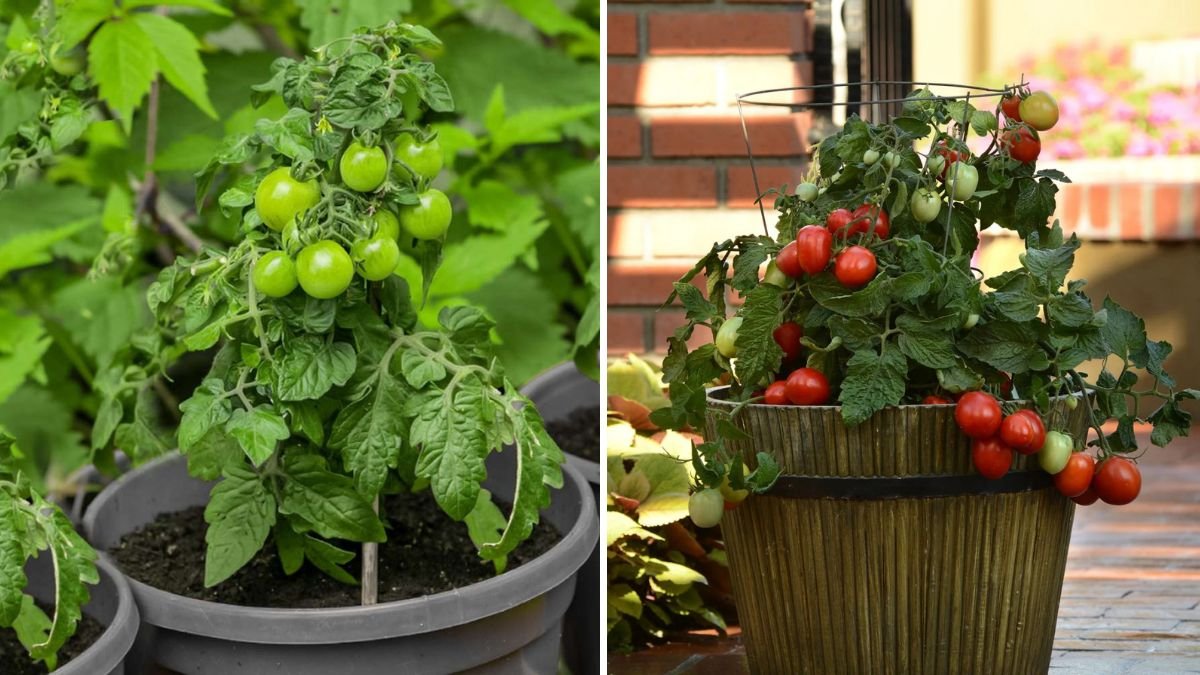Tomatoes are a favorite among home gardeners due to their versatility, flavor, and ease of use. While traditional gardening requires large plots, urban gardeners or those with limited space can successfully grow tomatoes in small buckets or containers. With the right techniques, even a balcony, terrace, or small patio can yield healthy, juicy tomatoes.
This guide explores how to grow tomatoes in small buckets, covering bucket selection, soil preparation, watering, fertilization, pruning, pest control, and harvesting to help gardeners achieve productive tomato plants in minimal space.
1. Choosing the Right Tomato Variety
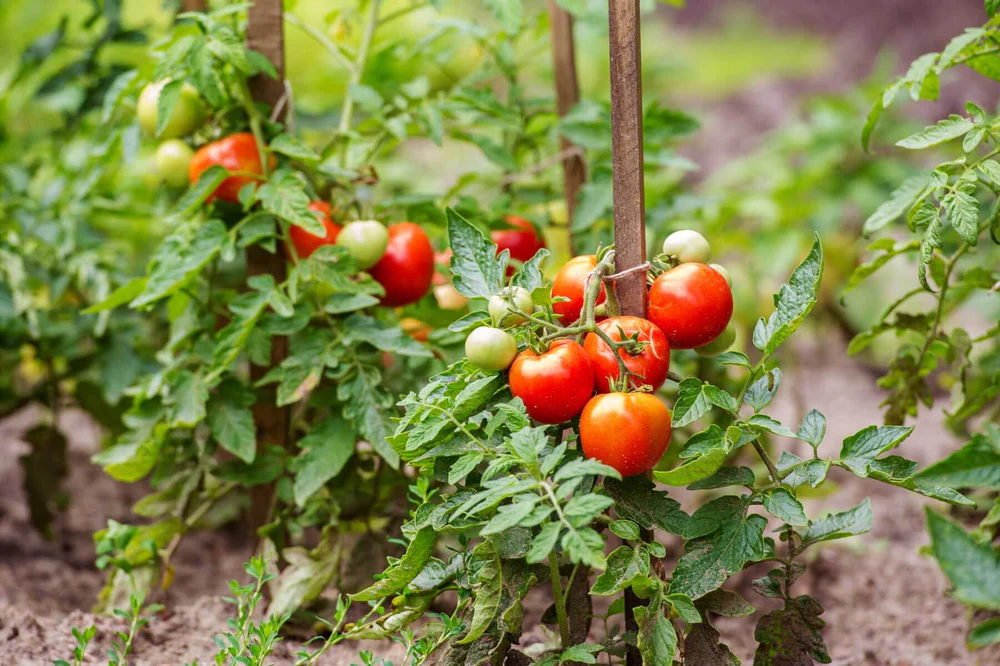
Selecting the right variety is critical when growing in small containers:
- Determinate Varieties (Bush Types):
- Compact, self-limiting growth, suitable for small buckets.
- Examples: ‘Patio’, ‘Tiny Tim’, and ‘Bush Early Girl’.
- Indeterminate Varieties (Vining Types):
- Grow continuously; require support structures.
- Examples: ‘Sungold’, ‘Cherry Tomatoes’.
- Use with stakes or cages even in buckets.
Tip: For small buckets (5–10 gallons), determinate or dwarf varieties are ideal, as they require less root space.
2. Selecting the Right Bucket
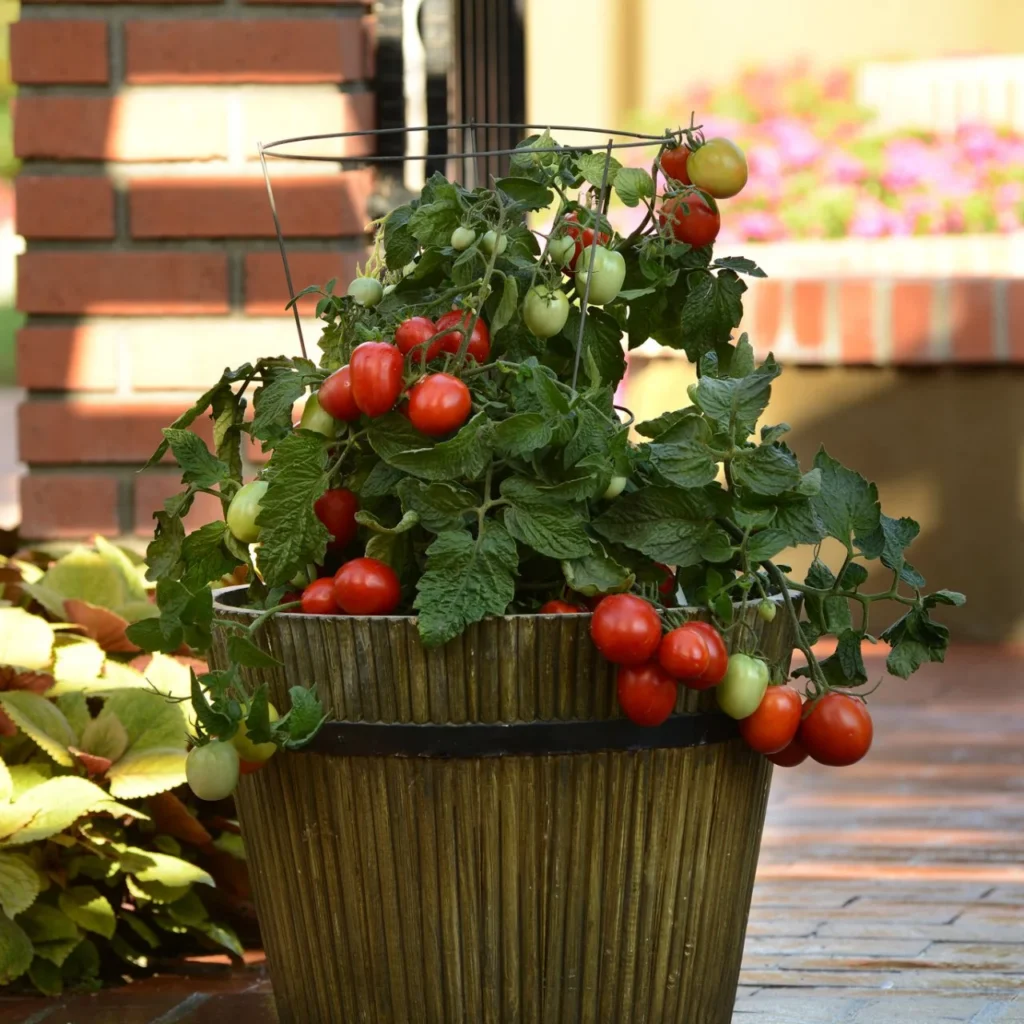
Bucket choice affects plant health and fruit production:
- Size: Minimum 5-gallon (20 liters) bucket per plant. Larger buckets provide more root space.
- Material: Plastic or sturdy food-grade buckets are lightweight and retain moisture. Avoid toxic or chemically treated containers.
- Drainage: Drill 4–6 holes at the bottom to prevent waterlogging.
Tip: Elevate buckets slightly with bricks or trays to ensure proper drainage and airflow.
3. Preparing the Soil
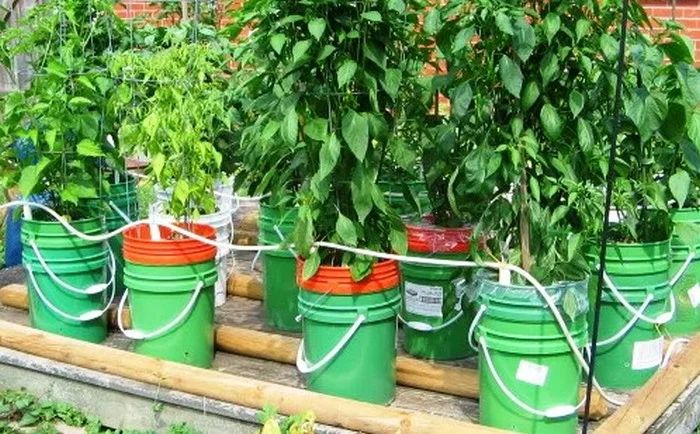
Tomatoes need well-draining, nutrient-rich soil:
- Mix Components:
- 2 parts high-quality potting soil
- 1 part compost or well-rotted manure
- 1 part perlite or coarse sand for aeration
- pH Requirement: Slightly acidic soil (pH 6.0–6.8) promotes nutrient uptake.
- Nutrients: Incorporate slow-release fertilizers or organic amendments like bone meal or neem cake.
Tip: Avoid garden soil alone—it may compact in buckets, leading to poor drainage and root growth.
4. Planting Tomatoes in Buckets
Proper planting techniques ensure strong root development:
- Seedlings vs. Seeds: Use healthy 4–6 week-old seedlings for faster growth.
- Depth: Plant seedlings deep, burying 2/3 of the stem to encourage additional root growth.
- Spacing: One plant per bucket to avoid overcrowding.
Tip: If using seeds, start indoors or in small trays before transplanting to buckets.
5. Sunlight and Placement
Tomatoes thrive in full sun, which is crucial for flowering and fruiting:
- Requirement: 6–8 hours of direct sunlight daily.
- Placement: Balcony or terrace facing south or west is ideal.
- Rotation: Rotate buckets periodically to ensure even sunlight exposure on all sides.
Tip: If sunlight is limited, use reflective surfaces or grow lights to supplement.
6. Watering Tomatoes in Buckets
Proper watering is critical for container tomatoes:
- Frequency: Water when the top 1–2 inches of soil feel dry.
- Method: Deep watering encourages roots to grow downward.
- Avoid Overwatering: Waterlogging can lead to root rot.
- Consistency: Inconsistent watering can cause blossom end rot and fruit cracking.
Tip: Mulch with straw, shredded leaves, or coconut coir to retain moisture and keep soil cool.
7. Fertilization
Tomatoes are nutrient-hungry, especially in small containers:
- Balanced Fertilizer: Use a fertilizer high in nitrogen early for foliage, then shift to higher phosphorus and potassium for flowering and fruiting.
- Frequency: Every 2–3 weeks with liquid fertilizer or slow-release granules.
- Organic Options: Compost tea, fish emulsion, or seaweed extract can improve soil health.
Tip: Avoid excessive nitrogen during fruiting—it encourages leafy growth over fruit production.
8. Supporting Tomato Plants
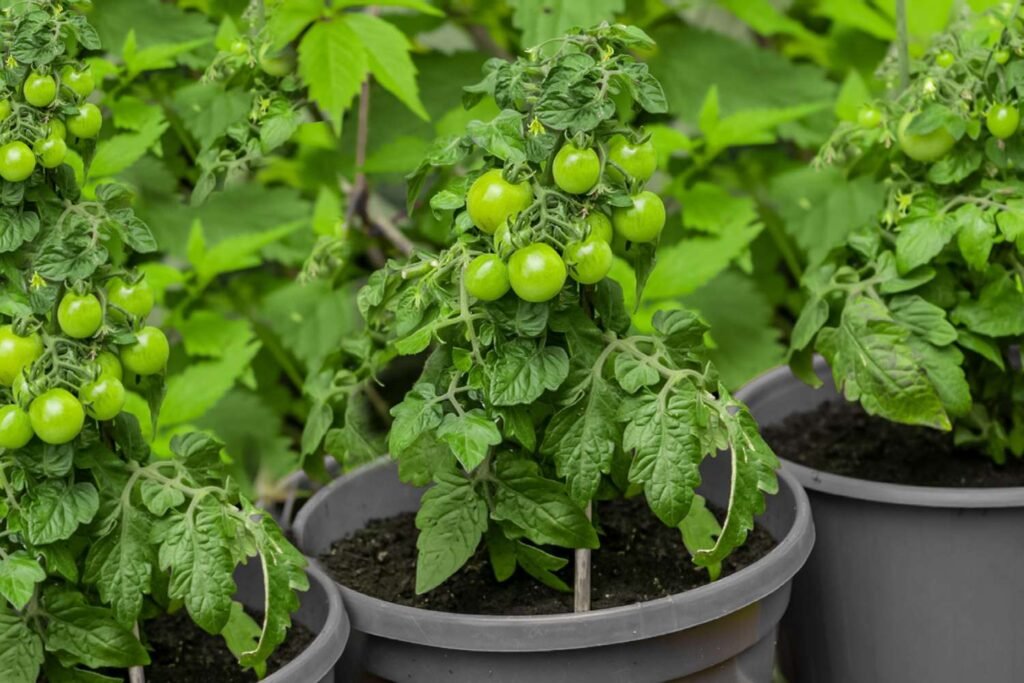
Bucket-grown tomatoes need support to prevent bending and breakage:
- Stakes: Bamboo or metal stakes tied with soft garden ties.
- Cages: Wire cages provide 360-degree support, ideal for determinate varieties.
- Trellises: For indeterminate types, vertical trellising saves space.
Tip: Install supports at planting time to avoid disturbing roots later.
9. Pruning and Maintenance
Pruning improves airflow, reduces disease, and enhances fruit yield:
- Remove Suckers: Pinch side shoots growing between the main stem and branches.
- Trim Lower Leaves: Prevent soil-borne diseases by removing leaves near soil level.
- Deadheading: Remove yellowing or damaged leaves to promote healthy growth.
Tip: Maintain a balanced canopy; over-pruning can reduce photosynthesis and slow growth.
10. Pest and Disease Management
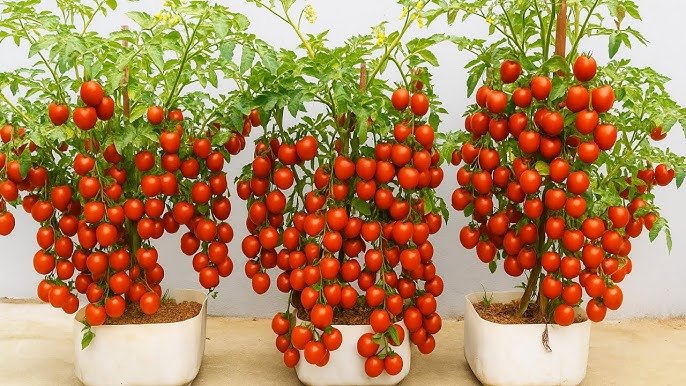
Container tomatoes are susceptible to pests and diseases:
- Common Pests: Aphids, whiteflies, spider mites, and tomato hornworms.
- Natural Remedies: Neem oil spray, insecticidal soap, or introducing ladybugs.
- Common Diseases: Blossom end rot, fungal infections, and bacterial spots.
- Prevention: Proper spacing, clean containers, and avoiding overhead watering.
Tip: Inspect plants regularly; early detection prevents infestations from spreading.
11. Pollination
Container tomatoes may need assistance for pollination, especially indoors:
- Self-Pollinating Flowers: Most tomato varieties are self-pollinating.
- Assisted Pollination: Gently shake flowers or use a small brush to transfer pollen.
- Encourage Pollinators: Place containers outdoors when possible to attract bees and beneficial insects.
Tip: Vibrating flowers slightly with an electric toothbrush can improve fruit set.
12. Harvesting Tomatoes
- Timing: Harvest when fruits reach full color and slightly firm to the touch.
- Frequency: Pick regularly to encourage continuous fruiting.
- Method: Twist gently or use pruning shears to avoid damaging the plant.
Tip: Leave some tomatoes on the vine to fully ripen if needed for flavor.
13. Additional Tips for Small Bucket Gardening
- Mobility: Place buckets on caddies to move plants in and out of sun or protect from rain.
- Companion Planting: Grow basil, marigolds, or nasturtiums nearby to repel pests and improve yield.
- Winter Care: Bring buckets indoors or provide frost protection in colder climates.
- Layering Buckets: Use shelves to maximize space and create a vertical garden effect.
Conclusion
Growing tomatoes in small buckets is a practical and rewarding solution for urban gardeners. With proper selection of varieties, containers, soil, watering, fertilization, and maintenance, even limited spaces can produce abundant, flavorful tomatoes.
Key takeaways:
- Choose determinate or dwarf tomato varieties suitable for containers.
- Use 5–10 gallon buckets with proper drainage.
- Provide well-draining, nutrient-rich soil and regular watering.
- Fertilize consistently to meet the plant’s nutritional needs.
- Provide support with stakes, cages, or trellises.
- Prune and maintain foliage to enhance airflow and fruit production.
- Monitor for pests and diseases regularly.
- Assist pollination if needed, especially indoors.
- Harvest fruits at peak ripeness for best flavor.
- Utilize space efficiently with companion planting, mobility, and vertical arrangements.
By following these guidelines, gardeners can maximize tomato production even in small urban spaces, transforming buckets into thriving, productive gardens.
